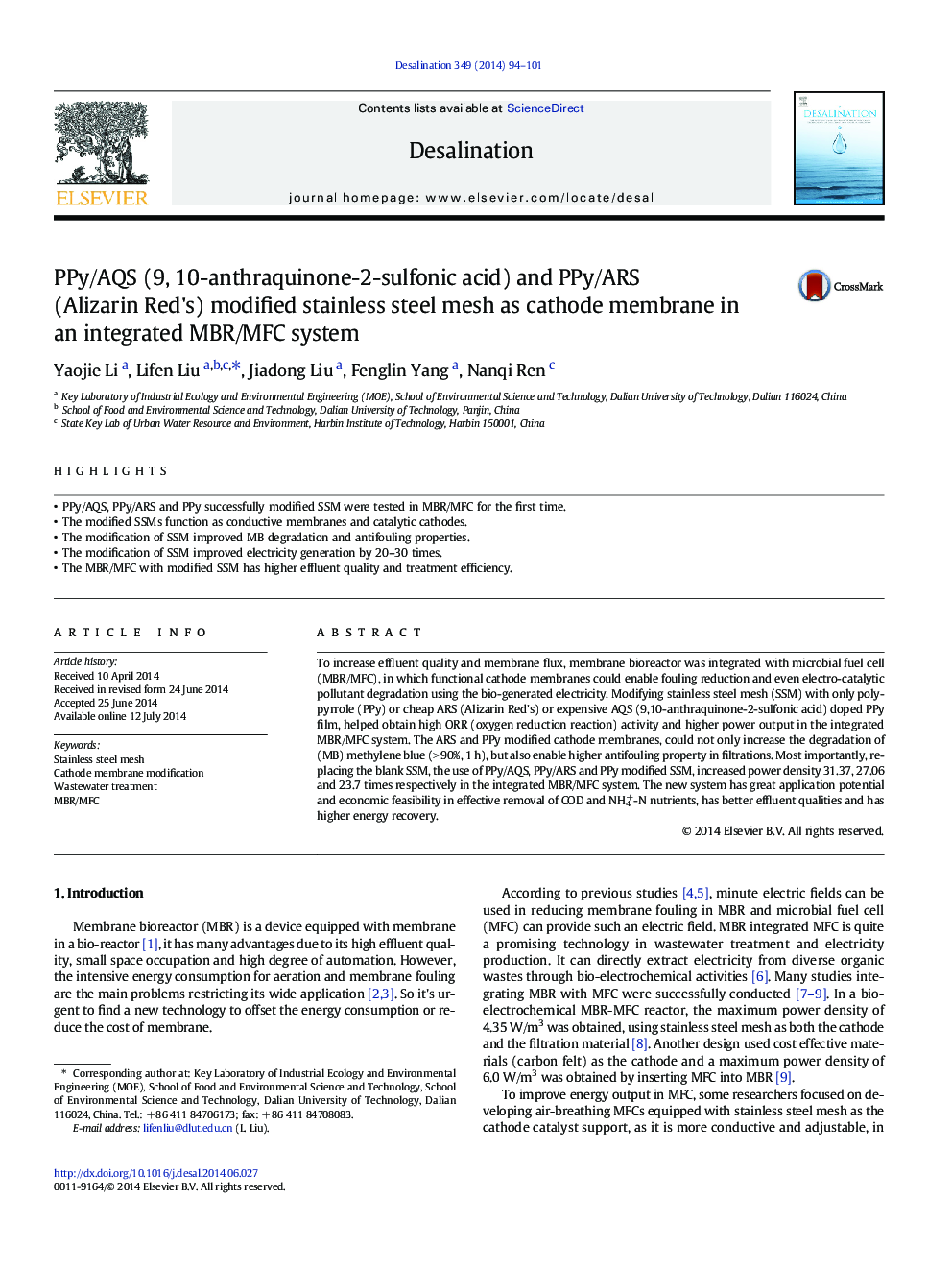| Article ID | Journal | Published Year | Pages | File Type |
|---|---|---|---|---|
| 623435 | Desalination | 2014 | 8 Pages |
•PPy/AQS, PPy/ARS and PPy successfully modified SSM were tested in MBR/MFC for the first time.•The modified SSMs function as conductive membranes and catalytic cathodes.•The modification of SSM improved MB degradation and antifouling properties.•The modification of SSM improved electricity generation by 20–30 times.•The MBR/MFC with modified SSM has higher effluent quality and treatment efficiency.
To increase effluent quality and membrane flux, membrane bioreactor was integrated with microbial fuel cell (MBR/MFC), in which functional cathode membranes could enable fouling reduction and even electro-catalytic pollutant degradation using the bio-generated electricity. Modifying stainless steel mesh (SSM) with only polypyrrole (PPy) or cheap ARS (Alizarin Red's) or expensive AQS (9,10-anthraquinone-2-sulfonic acid) doped PPy film, helped obtain high ORR (oxygen reduction reaction) activity and higher power output in the integrated MBR/MFC system. The ARS and PPy modified cathode membranes, could not only increase the degradation of (MB) methylene blue (> 90%, 1 h), but also enable higher antifouling property in filtrations. Most importantly, replacing the blank SSM, the use of PPy/AQS, PPy/ARS and PPy modified SSM, increased power density 31.37, 27.06 and 23.7 times respectively in the integrated MBR/MFC system. The new system has great application potential and economic feasibility in effective removal of COD and NH4+-N nutrients, has better effluent qualities and has higher energy recovery.
